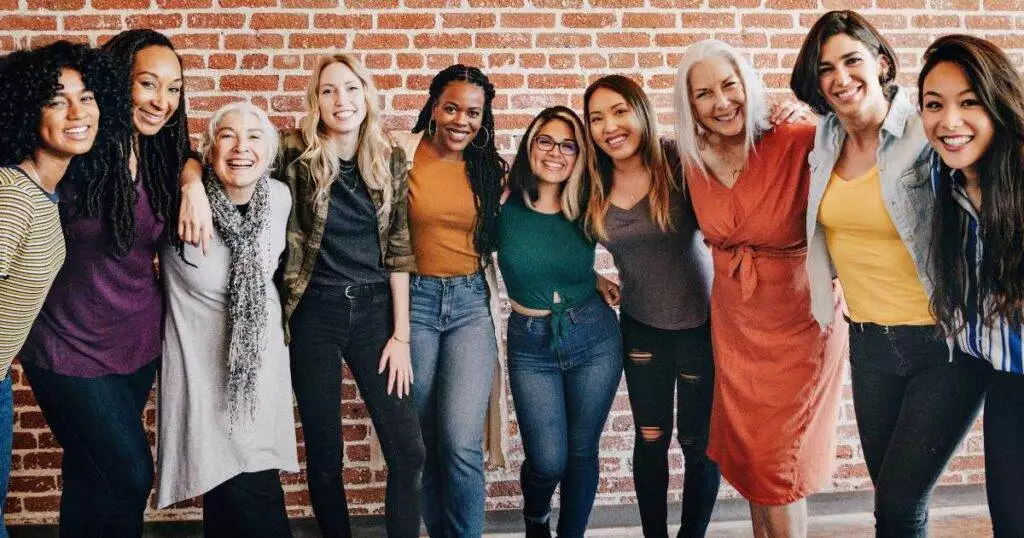
As women age and go through different life stages, their hair changes. From pregnancy and postpartum to menopause and beyond, it’s common for certain periods of our lives to bring a change in the way our hair looks and feels. Some of it is spurred on by hormones; other times it’s genetics, age, or lifestyle. Hair loss and age go hand in hand; fortunately, there are specific treatments that can address anything from hair loss in teens to hair loss in older women.
Today we will take a look at the specific life stages in which women are most prone to hair loss and how treatments vary for each stage. We’ll also show you real-life success stories of how women just like you have overcome hair thinning.
From the teen years to post-menopause, women go through many changes that can impact their hair quality and quantity. Many factors, from stress to hormones, are at play here. However, different life stages bring different potential causes of hair thinning in females.
Starting as early as the teenage years, early signs of hair thinning can be seen due to hormonal fluctuations, stress, and PCOS. Polycystic ovary syndrome (PCOS), for example, is a hormonal disorder where the ovary produces too much testosterone and is a common cause of hair loss in young women.
In addition, high levels of stress can cause hair loss or worsen different types of hair loss, characterized by excessive shedding, increased inflammation around the hair follicle, and even the irresistible urge to pull hair. High-androgen birth control pills can also be to blame. In addition, young women are frequently dieting or eating less nutritious or fast foods, which can negatively affect hair growth.
Fortunately, there are many hair loss treatments available for this age and stage of hair loss.
Treatments include nourishing the hair with vitamin supplements, topical treatments, minoxidil (female Rogaine) to stimulate re-growth, and Platelet Rich Plasma (PRP) Therapy using natural growth factors.
The hormonal shifts during pregnancy can lead to thicker, shinier, more lustrous hair. That’s because higher levels of estrogen work to prolong the growth phase, resulting in less shedding of hair, according to Dr. Mary Wendel, Medical Director at Medi Tresse. However, after giving birth, the growth/rest cycle reverts to its previous pattern, resulting in telogen effluvium (hair shedding) one to five months after delivery. In addition, the rapid hormone changes and anemia which often accompany childbirth can also aggravate shedding.
TE affects women after they experience severe stress or changes to their body, most common in women between the ages of 30 and 60.
Treatment includes the use of scalp exfoliation treatments, serums, and gentle hair care products, including Medi Tresse’s own line of Revive shampoo and conditioner, to encourage regrowth.
Women typically start to go through perimenopause in their late 40s, followed by menopause in their early 50s. Declining estrogen levels during these periods lead to hair loss in older women, especially at the crown and temples.
Specifically, the risk for androgenic alopecia dramatically increases after menopause. At this time, levels of estrogen and progesterone (the main female hormones) plummet. Testosterone (the male hormone) levels in women also decrease, but not at the same rate as estrogen. The ratio of testosterone to estrogen increases during menopause, which in turn leads to an increase in androgenic alopecia, also known as Female Pattern Hair Loss (FPHL).
Aging hair loss treatments includes Platelet Rich Plasma (PRP) therapy, Low-Level Laser Therapy (LLLT), and hormonal supplements to support hair health.
The effects of aging and a drop in hormonal levels contribute to androgenic alopecia, the most common cause of hair thinning and loss in women. Caused by a combination of genetics and hormones, female pattern hair loss causes your part to widen and the hair strands to slowly thin out throughout the top of the head.
Over time, the lifecycle of the hair follicle shortens, which impacts the growth phase. This is why older women are unable to grow their hair as long as young women. For some follicles, the growth phase can get so short that they stop producing any hairs at all.
Treatment for post-menopause and aging will focus on scalp health, volumizing products, and PRP therapy, LLLT, and supplements to stimulate follicle regrowth.
The hair loss specialists at Medi Tresse have spent decades researching hair loss and life stages to pair each stage with the best treatments possible. Here’s a shapshot of how treatments vary based on life stages:
We are all about educating our patients with blogs, studies, and more here at Medi Tresse. However, we also believe in showing you real-life results from actual patients. You can see how the treatments work in women just like you. Check out these recent case studies across the lifespan:
Personalized treatments based on each life stage can make a significant difference in managing and reversing hair loss. It’s important to choose treatments that address root causes like hormonal changes and genetics rather than just focusing on the symptoms. That’s why, when you come for a consultation at one of Medi Tresse’s many locations, we take the time to truly understand the root cause of your hair loss before recommending the best treatment for you.
Hair loss and thinning treatments must be tailored to the individual, with the right combination of topical treatments, supplements, and advanced therapies. So no matter which life stage you’re at now, rest assured there is a treatment out there for you.
Call us today for a personalized consultation. Explore the products and treatments that can help restore hair at every life stage!